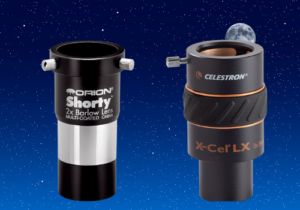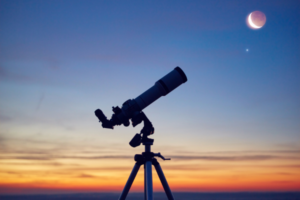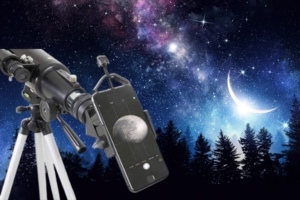Can A Telescope See Through Clouds
Since the time when Galileo invented the first telescope in 1608, clouds have been a constant concern to amateur and professional astronomers alike and they have often wondered if a telescope can see through the clouds.
Key Takeaways:
- Telescopes see things the same way as we do. A telescope receives light just like your eye does, so if your eye can see it, so can a telescope, but if you can’t see it then even the telescope won’t be able to, no matter how powerful it is.
In fact, telescopes are much more sensitive than our eyes because of their ability to magnify. A telescope’s ability to see is greatly reduced even in a sparsely clouded night as the telescope ends up magnifying the tiny water droplets & particles that form the clouds.
Events such as eclipses, occultations or a rare sight of a celestial body occur in the night sky at very specific times. In order for astronomers to observe these things with their telescopes they need the sky to be clear of clouds. But, the weather, a.k.a Mother Nature doesn’t care.
Why Can’t You See Through The Clouds?
The images we see are made up of light reflected from the objects we look at. Light bends or refracts each time it hits the boundary between two different materials. A cloud is made up of millions of water droplets, with light refracting each time it enters and leaves a droplet.
Thus the path of light will be bent millions of times as it travels through the cloud and the individual rays will end up emerging at random places, because they hit different droplets that bend them in different ways, making the cloud white.

What Are Clouds Made Of?
Clouds are created when water vapor, an invisible gas, turns into liquid water droplets. These water droplets form on tiny particles, like dust, that are floating in the air.
Although clouds contain water, they actually aren’t made of water vapor. The water that makes up clouds is in liquid or ice form. The air around us is partially made up of invisible water vapor. It’s only when that water vapor cools and condenses into liquid water droplets or solid ice crystals that visible clouds form.
Related: Best Astronomical Telescope 2021; Reviews
Which Telescope Can See Through The Clouds?
Radio telescopes can be used to observe the celestial bodies through the clouds. Radio telescope is an astronomical instrument consisting of a radio receiver and an antenna system that is used to detect radio-frequency radiation emitted by extraterrestrial sources. Radio telescopes don’t see but detect radio waves and are not affected by clouds.
Radio telescopes detect and amplify radio waves from space, turning them into signals that astronomers use to enhance our understanding of the Universe.
What To Do On A Cloudy Night?
If your stargazing plans have been hampered by a sudden appearance of clouds in the night sky, there are still a few useful and productive things that you can do.
Plan a night of observing:
Knowing what you will be able to observe during the time and date that you are able to observe is crucial to a good rewarding night of observing. Buy a star chart and a good astronomy book to plan another rewarding night of stargazing.
Related: Best Affordable Telescope 2021; Reviews
Join a online forum or a social media community:
There isn’t a better way to share the sights you have seen and the experiences you’ve had with the like minded people on social media platforms or online forums. Most forums and groups are easy to join and welcome newcomers with great ideas.
Process your astrophotography images:
A cloudy night would be best spent with you fiddling with the images that you have taken of celestial bodies. Process them, observe, analyze and see how you can take even better pictures next time, once the sky has cleared up.
Spend time with your family:
Another great way to utilize a cloudy night would be to spend some quality time with your family or spouse. This might make them understand your long stargazing outings a bit more.
ABOUT US
We are a team of active amateur astronomers, here to help you with all your astronomy and science related needs – this is anything, from reviewing the latest telescopes to be released to talking about gravity and neurons. The Big Bang Optics was started because of our love for astronomy and to help others like us find the best telescope and accessories.
LEGAL DISCLAIMER
The Big Bang Optics is a participant in the Amazon Services LLC Associates Program, an affiliate advertising program designed to provide a means for sites to earn advertising fees by advertising and linking to Amazon.com. The Big Bang Optics also participates in affiliate programs with Clickbank and other sites. The Big Bang Optics is compensated for referring traffic and business to these companies.




